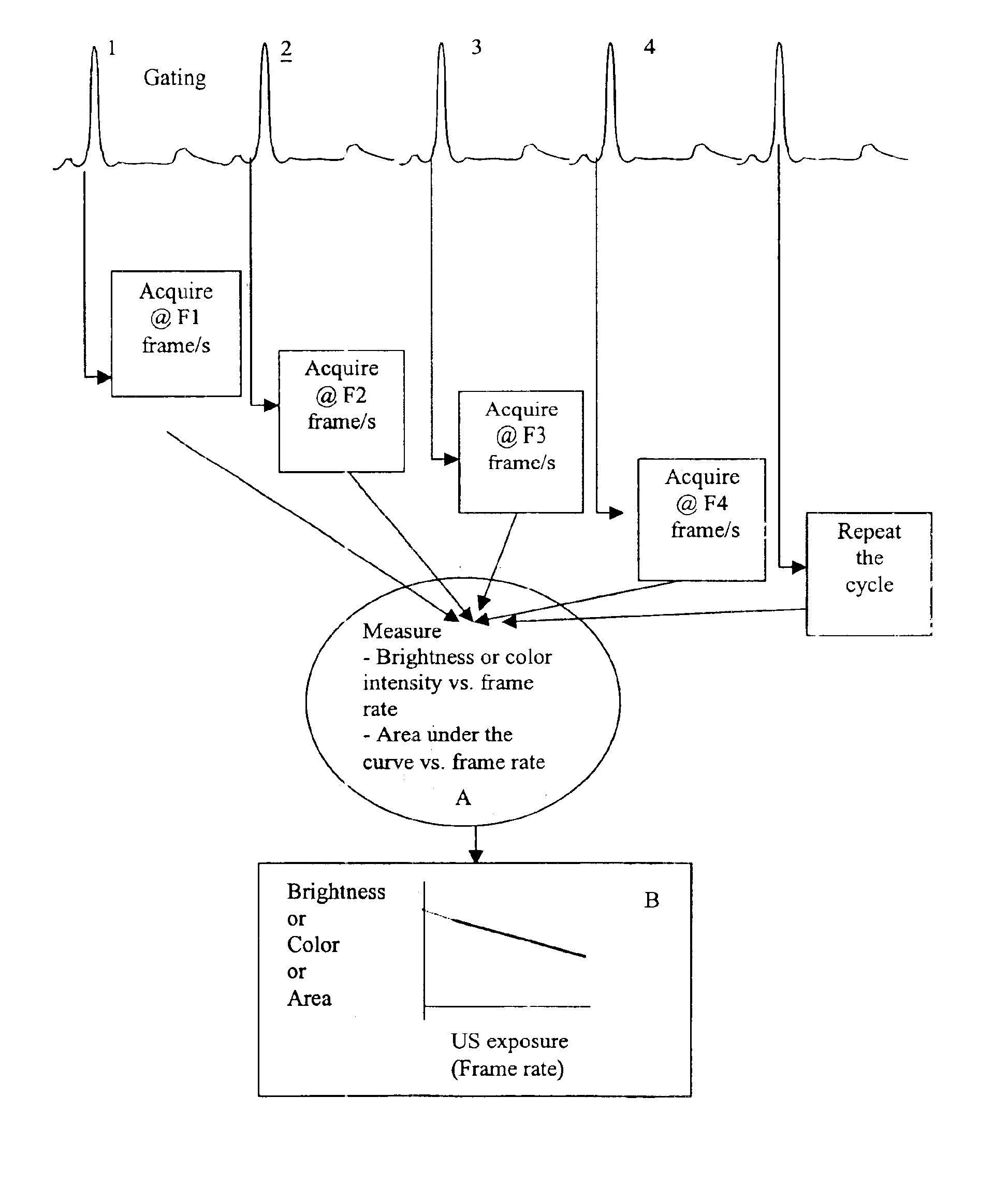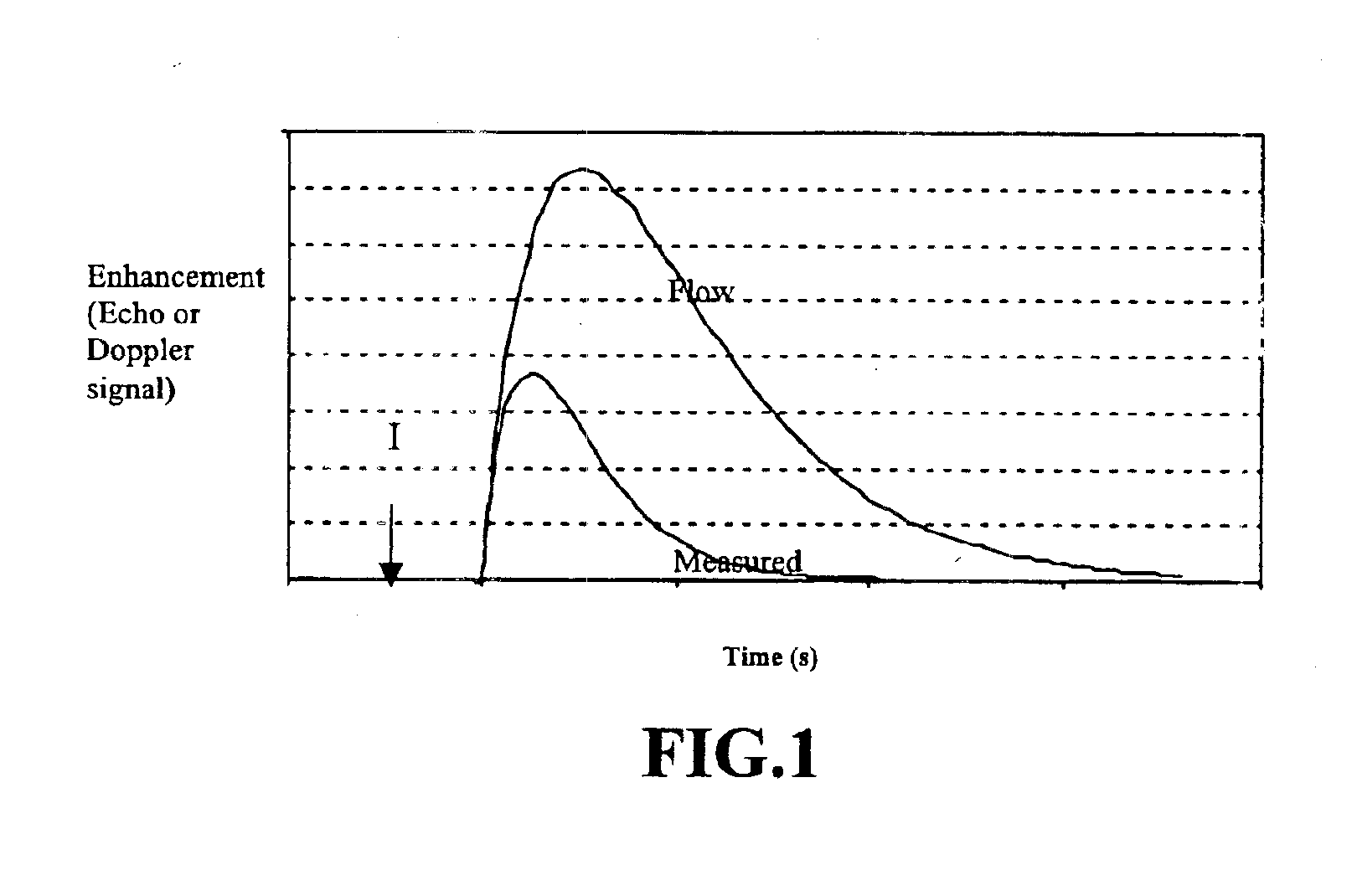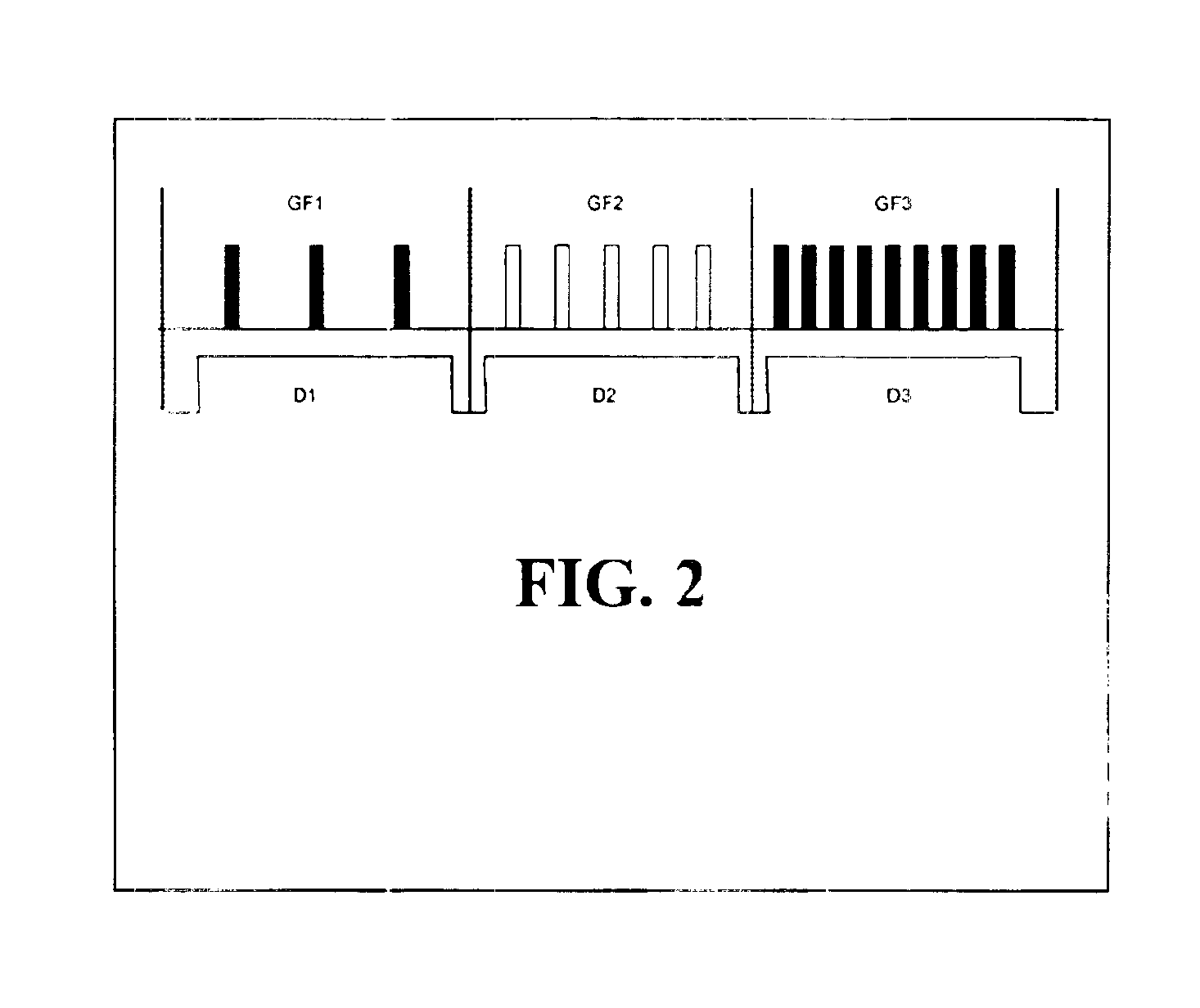Method and apparatus to control microbubble destruction during contrast-enhanced ultrasound imaging, and uses therefor
a technology of contrast agent and ultrasound imaging, applied in the field of contrast agent-enhanced ultrasound imaging, can solve the problems of inability to use doppler ultrasound to measure the flow through small vessels, uncontrolled angiogenesis, and limited use of doppler ultrasound to measure the flow in small vessels. , to achieve the effect of increasing the brightness of ultrasound and doppler images, reducing amplitude, and increasing image brightness
- Summary
- Abstract
- Description
- Claims
- Application Information
AI Technical Summary
Benefits of technology
Problems solved by technology
Method used
Image
Examples
example 1
Effectiveness of Invention by Both Gray Scale and Power Dopple Imaging
To permit multiple dilution curves to be acquired by the use of only a single contrast injection an apparatus has been developed, along with a novel, gating scheme. Briefly the apparatus comprises a laptop based computer device that allows acquisition of images at a variable rate using a commercial ultrasound scanner. Conceptually this device, which is referred to as a data acquisition controller (DACC), controls the on / off time of the scanner through the EKG port of the scanner.
The DACC generates a gating pulse sequence at a variable repetition frequency. With each gating cycle, the ultrasound image is updated with a new frame. After the initial cycle, the scanner is turned “off” until the next trigger cycle, at which point the scanner updates the image. The on / off gating cycle (GF) is varied by changing the pulse repetition rate. The DACC also controls the duration (D) for which each gating frequency is maintain...
example 2
In vivo Studies
While the phantoms provide measurements under controlled conditions, in vivo studies provide proof of the effectiveness of the invention under actual blood flow imaging conditions. To demonstrate that the method can be used to measure blood flow in real situations, measurements were made in mice by injecting 0.1 ml of contrast agent. FIG. 7 shows the change in power Doppler images as the ultrasound contrast transits through the imaged cross-section.
Power Doppler was chosen for imaging because of its higher sensitivity in detecting contrast agent (see, Sehgal et al., J. Ultrasound Med. 14:741-748 (1995)). During the transit of contrast agent, the images were acquired by varying the frame rates to 0.5, 2, and 4 frames per second (fps). The numbers at the bottom left corner of each image in FIG. 7 represent the time in seconds relative to the time of the contrast injection (e.g., 0.1 ml bolus injection of Optison). The first frame (FIG. 7A) shows an image of the tumor be...
example 3
Apparatus
Various configurations of the apparatus are possible. In the 2D mode, the scan system could be a stand-alone system or a module that controls the operation of a conventional scanner. FIG. 9 shows a configuration of a “stand-alone” system. In the preceding examples, the apparatus was used in conjunction with a commercial scanner to generate the reported data.
Unlike conventional imaging systems, the image acquisition in the present apparatus is initiated by an external signal (ETS, Box A) either provided by a user or by provided automatically using physiological signal. Some example of external trigger are listed in Box A and include, but are not limited to ECG, respiration, bolus injection or any other physical event.
The ETS signal initiates the function of the master pulse controller (MPSC). The main purpose of this module, Box B, is to vary the exposure level during imaging. It achieves this by synthesizing a pulse sequence and using it to guide image acquisition. In the s...
PUM
 Login to View More
Login to View More Abstract
Description
Claims
Application Information
 Login to View More
Login to View More - R&D
- Intellectual Property
- Life Sciences
- Materials
- Tech Scout
- Unparalleled Data Quality
- Higher Quality Content
- 60% Fewer Hallucinations
Browse by: Latest US Patents, China's latest patents, Technical Efficacy Thesaurus, Application Domain, Technology Topic, Popular Technical Reports.
© 2025 PatSnap. All rights reserved.Legal|Privacy policy|Modern Slavery Act Transparency Statement|Sitemap|About US| Contact US: help@patsnap.com



